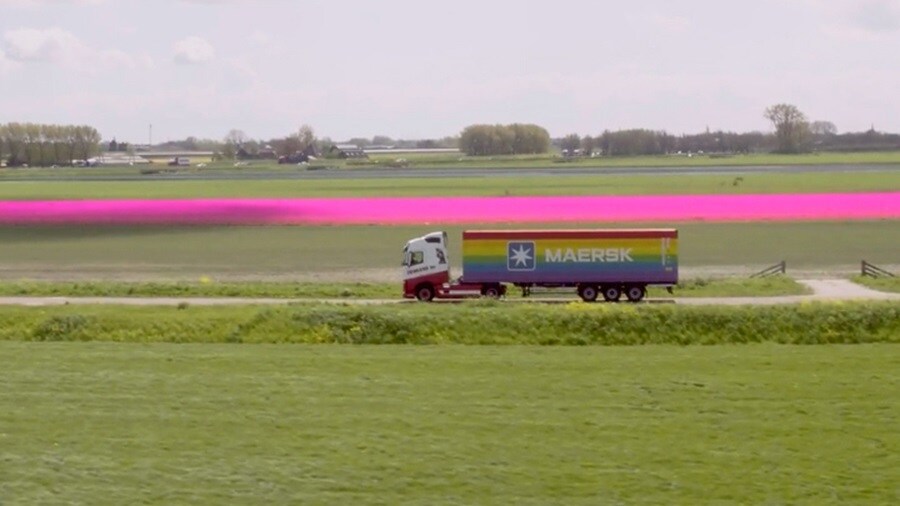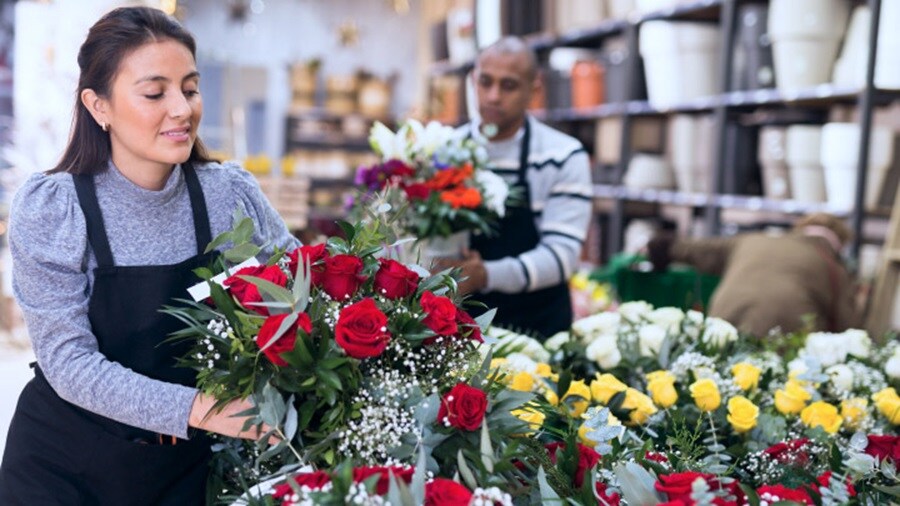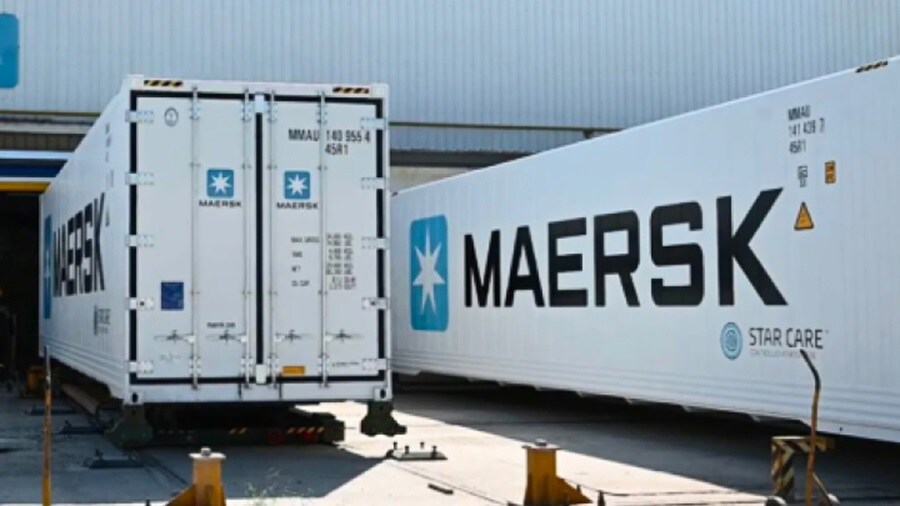Mother’s Day is a heartfelt celebration of love, gratitude, and the timeless bond between mothers and their children. While the exact date may vary, often landing on Sundays in May around the world, the sentiment remains the same: honouring the women who shape our lives.
From handwritten cards to sparkling jewellery, thoughtful gifts take centre stage on this day. But one gift continues to bloom above the rest: flowers. Universally cherished, flowers are a symbol of appreciation, adding colour and fragrance to the homes and hearts of mothers everywhere. These blooms not only brighten homes but also symbolise love, appreciation, and the special bond shared between mothers and their families across the world.
Flower supply chain blooms globally with Mother’s Day demand
All around the world, this occasion brings a surge in demand for fresh flowers. Often referred to as the “Christmas” of the floral industry, Mother's Day marks the peak of annual sales, turning the season into one of the busiest and most vibrant moments for floral growers. As a result, millions of stems are carefully moved from local farms to storefronts around the globe. The leading flower producers globally are The Netherlands, contributing around 68% of the total floral production, while Colombia is currently the world's second-largest exporter of cut flowers.
How Mother’s Day fuels Europe’s flower industry

This festivity significantly impacts flower production and sales in Europe, making it one of the busiest and most vibrant times for growers and retailers across the continent.
At the heart of Europe’s floral economy is The Netherlands, renowned for its extensive flower production and export capabilities, leads Europe with a production value of over €5.3 billion. Widely known as the “Flower Capital of the World.” The country alone is responsible for approximately 40% to 50% of global flower exports, supported by a well-established network of growers, auctions, and logistics providers that ensures a steady flow of blooms to markets worldwide.This consistent performance highlights the Netherlands’ central role in meeting seasonal spikes such as Mother’s Day.
This thriving industry is supported by other major producers like Germany, France, and Spain, which contribute to the continent's robust floral economy and help maintain Europe’s leadership in the global flower market.
Germany’s domestic flower sales alone reached €8.8 billion in 2024, underscoring the country’s dual position as both a major market and distribution hub for imported and European-grown flowers. Meanwhile, the UK’s Mother’s Day flower spending is expected to climb to £2.4 billion in 2025, showing strong consumer commitment to floral gifts during this period.
These figures highlight the central role that flowers play in the European gift market during this special season, underlining the enduring cultural value attached to floral gifts.
Colombia's blossoming role in Mother’s Day

The second largest flower producer is Colombia. Each year, millions of blooms make their journey from Colombia to destinations around the globe. Colombia exports more than $2bn worth of cut flowers each year, turning its natural conditions into a strategic advantage.
The country holds around 15% of the global market, with exports growing by over 66% between 2020 and 2024 - reaching 2.3 million units last year. Roses are the main attraction, followed by tropical and exotic species. The United States remains Colombia's top destination, absorbing most exports. Around 75% of the flowers from Colombia are being transported to the United States, especially around peak seasons like Mother's Day. But also, countries such as Japan, the United Kingdom, Canada, The Netherlands, and Russia receive flowers from Colombia.
While Colombia is leading the Latin American market, Ecuador has built a strong reputation too, particularly for its high-quality roses, with over 60 varieties cultivated for export. In 2024, the country exported more than one million units, totalling $987 million in value - reflecting a 22.8% increase since 2020. While the U.S. remains a key destination, Ecuadorian flowers also reach major European markets such as Germany, Italy, and Russia.
How Colombian flowers travel the world
An impressive 93% of Colombia’s flower exports are transported by air, ensuring a swift delivery to meet the tight timelines of this important holiday. Air Freight is the fastest method, allowing fresh flowers to arrive in top condition and right on time for celebrations.
Meanwhile, 7% of exports travel by sea. Although slower, Ocean Transportation offers a significant advantage: it allows for the transportation of large volumes under carefully controlled temperatures. In fact, this method often results in flowers arriving in even better condition, maintaining their beauty and freshness.
For instance, when flowers are transported in containers, the cold chain logistics journey of flowers from Colombia to the US starts with the harvesting of the flowers. Then, they are carefully packed, precooled, and loaded into temperature-controlled containers. Shipped via Maersk’s efficient “America Shuttle” route from ports like Cartagena and Buenaventura, flowers are transported swiftly to key U.S. entry points, including Miami, Jacksonville, and Port of Hueneme.
Upon arrival, shipments are inspected and transferred to cold storage facilities in cities like Charleston and Houston, maintaining optimal freshness. From there, they’re distributed nationwide through a temperature-controlled network. With integrated services, and real-time visibility, this seamless Cold Chain journey ensures that millions of flowers make it from farm to vase just in time for the holiday.
Latin America's natural floral advantage
What truly sets the region apart, however, is not just trade volume-but the land itself. Latin America's geography and climate offer ideal conditions for flower cultivation. The region benefits from stable temperatures, generous sunlight due to tis equatorial position, fertile soils and abundant natural water sources. These factors enable consistent, sustainable, and high-quality production with minimal infrastructure requirements.
These natural advantages give Latin America a competitive edge-but they also open the door to new opportunities. With rising demand and increased global reach, Latin America's floral industry is ready to scale its impact-building stronger, more agile connections between growers and markets around the world.
Ensuring fresh flowers through efficient cold chain logistics

Cultivating flowers specifically for the Mother's Day period is essential to meet the high demand. Growers plan their production cycles meticulously to ensure that flowers are ready and fresh for this peak season. This involves selecting the right varieties, timing planting and harvesting, and using advanced horticultural techniques to optimise growth and bloom times.
Behind every bouquet lies a carefully timed and complex logistical chain. The logistical challenge of keeping flowers fresh from the field to the florist shop is significant. Flowers, being highly perishable, require strict temperature control, specialised packaging, and precise transport scheduling to maintain their freshness from grower to final customer.
Any disruption along the way can compromise quality and result in financial loss for growers, distributors, and retailers alike.
This is where Maersk's cold chain services come into play. Maersk's advanced shipping solutions, tailored to the needs of temperature-sensitive cargo, ensure that flowers are transported swiftly and securely from farms to markets. Seamless shipping solutions by land, air, and sea ensure that your flowers remain fresh and protected throughout their journey. Our commitment to maintaining cargo quality and keeping supply chains moving is unwavering, ensuring that every bloom reaches its destination in pristine condition.
Using Captain Peter and Maersk's Remote Container Management system, producers can monitor their cargo from the moment it’s loaded inside the container until it arrives at its destination. With this visibility and reliability, they can be confident that the flowers will arrive fresh, enabling your business to flourish even during peak demand periods like Mother's Day.
For more information on our Cold chain logistics solutions, click here
How can you make your logistics interconnected?
Reduce complexity with an all-in-one solution where your business only has to deal with one partner to service all your supply chain needs from start to finish.
Learn more about how Maersk can help with integrated logistics.
Sign up to The Logistics Pulse newsletter
You did it, welcome onboard!
We're sorry, but there was a problem sending your contact request.
Please review the form fields and ensure all required information is provided correctly. If the issue persists, please contact our support team for further assistance.
Sign up to The Logistics Pulse newsletter
Receive our insights directly in your mailbox by signing up through this form and enter a world of truly integrated logistics. Get inspired by our selection of articles that help you navigate supply chains, understand industry trends, and shape your logistics strategy. You can unsubscribe anytime.
I agree to receive logistics related news and marketing updates by email, phone, messaging services (e.g. WhatsApp) and other digital platforms, including but not limited to social media (e.g., LinkedIn) from A. P. Moller-Maersk and its affiliated companies (see latest company overview). I understand that I can opt out of such Maersk communications at any time by clicking the unsubscribe link. To see how we use your personal data, please read our Privacy Notification.
By completing this form, you confirm that you agree to the use of your personal data by Maersk as described in our Privacy Notification.
